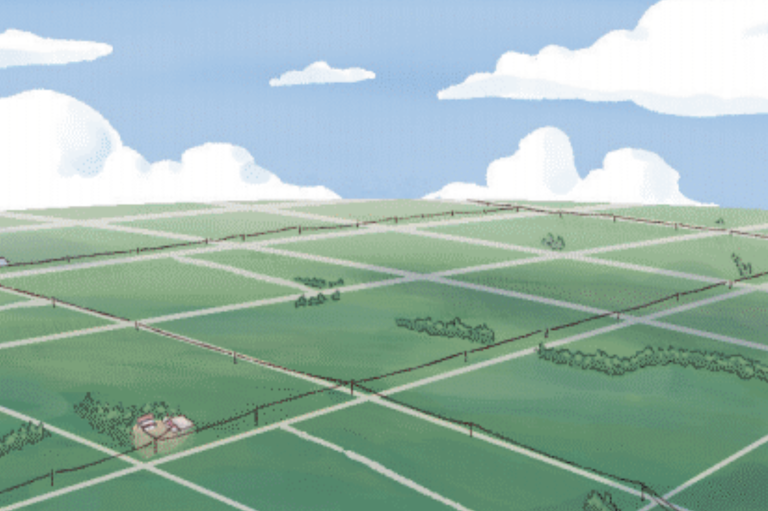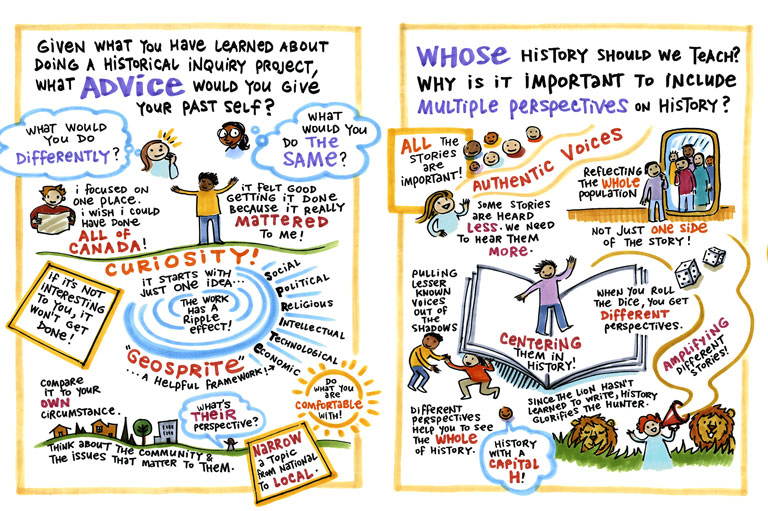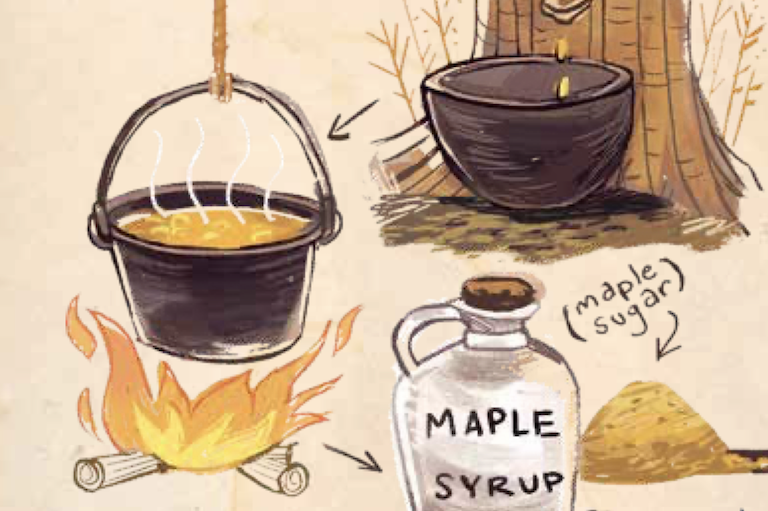Examining the Evidence: Understanding Daily Life in Residential Schools
OVERVIEW
These activities encourage students to investigate conditions at Residential Schools and to consider how the schools disrupted traditional Indigenous ways of learning. Through an investigation of Quarterly Return reports, which were documents completed by staff at Residential Schools, students will work together to come to understand the conditions at the schools. They will then reflect on the consequences of these conditions.
Teachers should review the primary sources in advance before sharing them with students, as they may contain sensitive content. It is also important to remind students that many of these records may relate to children who have died, or they may be the records of Survivors, or the records of family members of intergenerational Survivors. It is important to maintain respect for each individual and their experience.
ACTIVITIES
Part 1. Introduction and Background
Prepare yourself to lead a discussion with your students on traditional Indigenous knowledge. First Nations, Métis and Inuit groups in Canada have complex and varied knowledge systems and it is important not to generalize. Where possible, use regional sources or invite a local speaker or Elder into your classroom for this discussion.
For example, in British Columbia, the First Nations Education Steering Committee (FNESC) has developed the First Peoples Principles of Learning, which has been incorporated into much of the province’s curriculum.
Explain to students that they will be learning about different Residential Schools and some of the experiences at specific schools. Encourage a discussion about what the word “school” means. Ask: Would Residential Schools be considered schools by today’s definition? How do Western education systems differ from Indigenous approaches to learning? What were the intentions behind Residential Schools? How are those intentions different from the ones behind the school you attend today?
Remind your students that each student who attended Residential School had their own unique experience. Each school was different and operated in its own way. The schools also changed throughout the more than 100 years that they were in operation. It is important not to generalize the experiences of Residential School attendees.
Part 2. Reading and Comprehension
Distribute copies of the article “Remembering their Journey,” by Lisa Jane Smith, which starts on page 8 of Remembering the Children. Place students into seven groups, one for each of the Residential Schools discussed in the article. Remind students that as they read the article, they should make notes about the condition of the schools and the details of some students’ experiences in the Remembering Their Journey chart (see Handout: Remembering their Journey). Older students are encouraged to supplement the article with additional research.
Have each group share what they learned about the specific Residential School they read about. Ask the class: Were there similar experiences at the schools? Were there different experiences? Can you imagine if your school was like any of the ones in the article? How would you feel?
Part 3. Primary Document Analysis
Provide students with a copy of a Quarterly Return Report, available online through the National Centre for Truth and Reconciliation’s archive. There are several reports that correspond with the schools discussed in the “Remembering their Journey” article, or you can look up the Quarterly Return for a former Residential School in or near your community. The NCTR archive also contains a school narrative for each Residential School, which provides important information and context. These documents were created by the federal government as part of the Residential School class action settlement process. The school narratives may be supplied to older students for supplementary research.
Kamloops Residential School:
School Narrative
Quarterly Return: 1943-03-31
Quarterly Return: 1945-03-31
Quarterly Return: 1947-03-31
Shubenacadie Residential School:
School Narrative
Quarterly Return: 1944-06-30
Quarterly Return: 1949-03-31
Beauval Residential School:
School Narrative
Quarterly Return: 1945-03-31
Shingwauk Residential School:
School Narrative
Quarterly Return: 1949-03-31
Blue Quills Residential School:
School Narrative
Quarterly Return: 1945-03-31
Quarterly Return: 1950-09-30
Give students time to read the report and decipher its contents. Teachers may prompt discussion by asking questions such as:
- What do you think this document is?
- Who prepared it?
- Who was it for?
- What information do you see recorded?
- What questions do you have?
Following a discussion, explain the different parts of the report using the supplied annotated return (See Teacher Handout: Annotated Quarterly Return) and contextual information (See Teacher Handout: Reading a Quarterly Return).
Have students use a digital or printed map to record the location of the Residential School they have been researching using their Quarterly Return. Then, using the details in the report, record the location of students’ home communities or territory. Together or independently, encourage students to reflect on the distance between the school and the children’s home communities. Ask:
- Have you ever been separated from your family? How did you feel?
- How would you feel if you couldn’t see your parents at the end of your school day?
- Have you ever been somewhere where your surroundings were unfamiliar?
Older students can go deeper into their research by analyzing more information on the Quarterly Return. Have students note additional details about the school, such as dates of operation and who ran the school. Students may need to do external research to fill out this section. Have students record their information on the Examining Quarterly Returns worksheet (See Handout: Analyzing Quarterly Returns).
Part 4. Drawing Conclusions
Ask students to respond to the questions below. Remind them that they are making inferences based on the information in the report and their map.
- What do you think the impact of being separated from a home community was? What would it have been like to be the only child from a community attending a school?
- Are there any specific remarks about a student’s progress or reasons for absence? What do you think these comments potentially reveal?
- How would you describe the conditions that children faced at this specific Residential School?
- What can you learn from reviewing Quarterly Reports? What information does it reveal about how Residential Schools were operated?
- What aspects of Indigenous ways of learning were disrupted when children attended Residential Schools?
Part 5. Reflecting and Taking Action
As a class or in groups, choose a Residential School to commemorate. Design a plan for your commemoration — is it a building, a park, a piece of art? Include a rationale for your decision and prepare a short piece of text that describes the history and significance of the Residential School.
Part 6. Extension — Listening to Survivors
First-hand accounts enrich the potential for discussing the legacy of the Residential School policy. Ideally, teachers are able to reach out to their community for potential speakers, such as an Elder from a local First Nation, or a Survivor. Be sure to research appropriate protocols and allow plenty of time if you are developing a new relationship. If it is not possible to arrange an in-person speaker, you can show videos of the sharing circles that took place as part of the TRC’s statement gathering process. These are available through the National Centre for Truth and Reconciliation archive. You can also find oral interviews through the Legacy of Hope Foundation website.
Themes associated with this article
Advertisement




